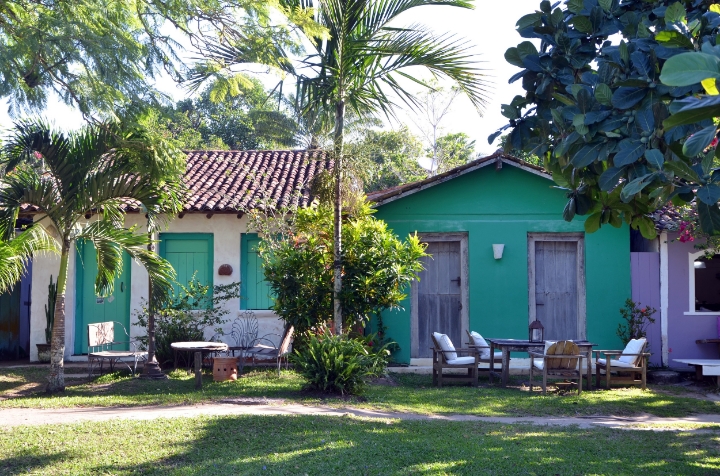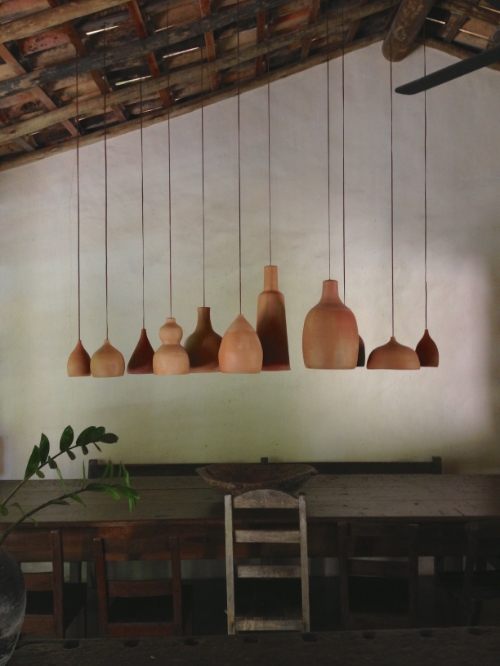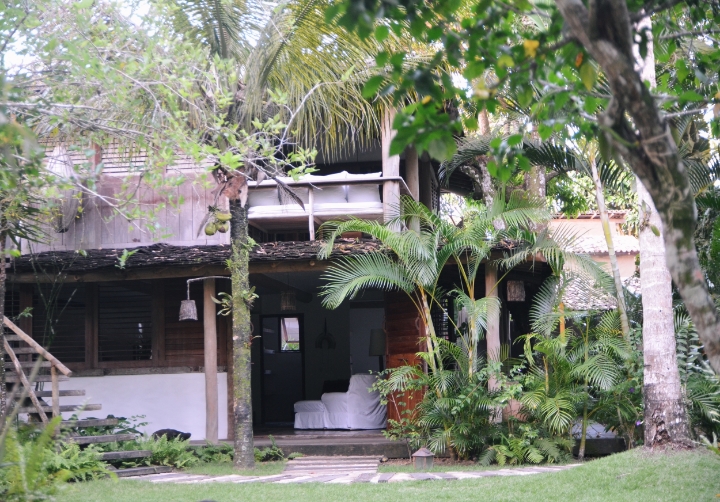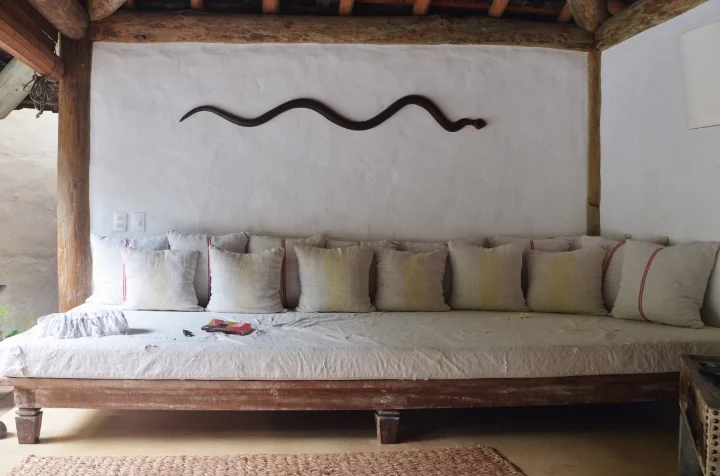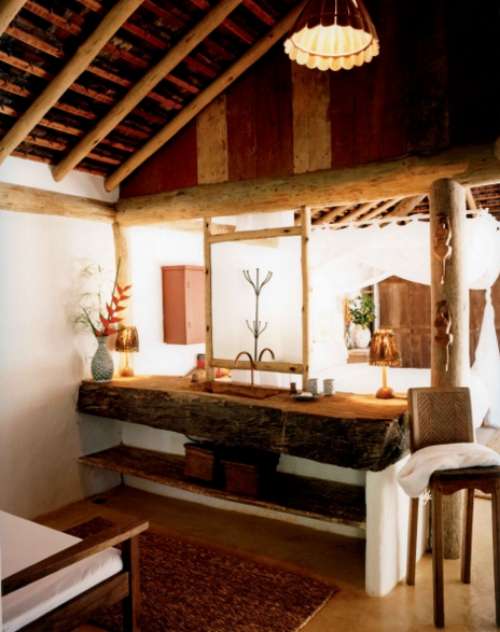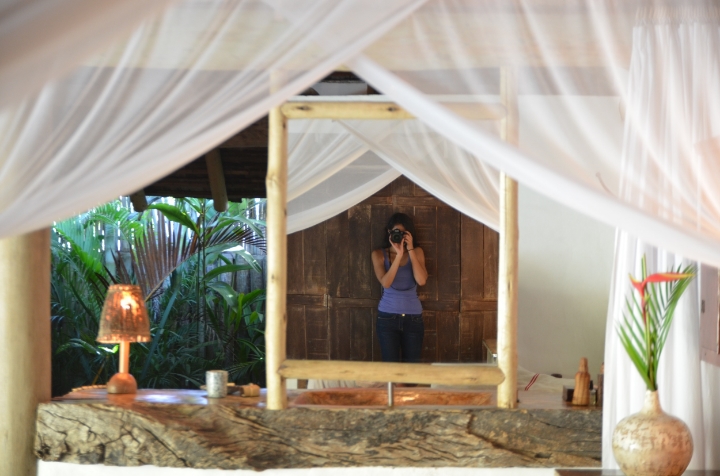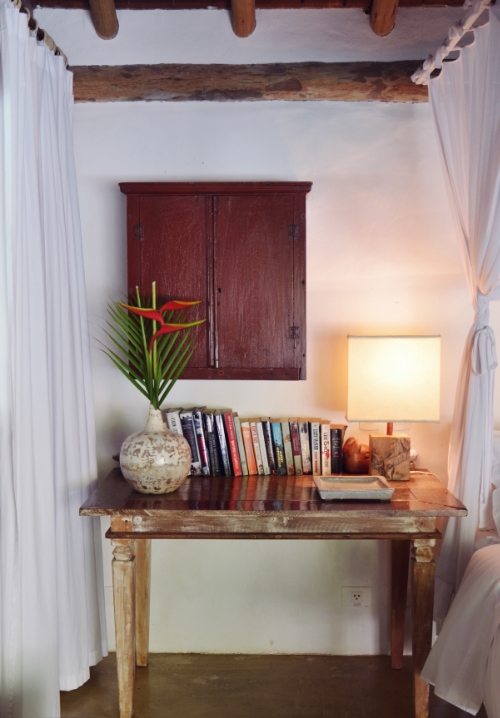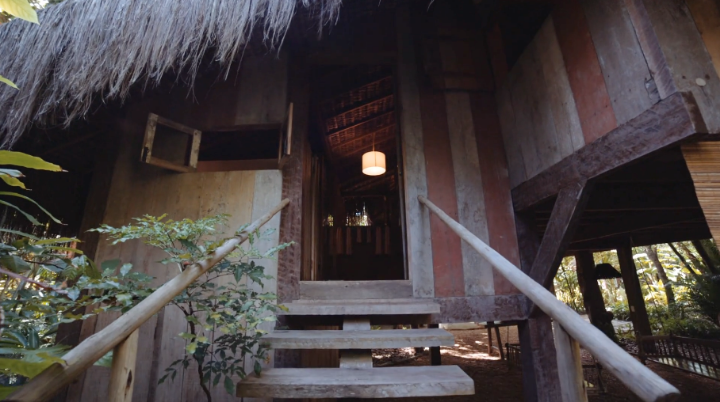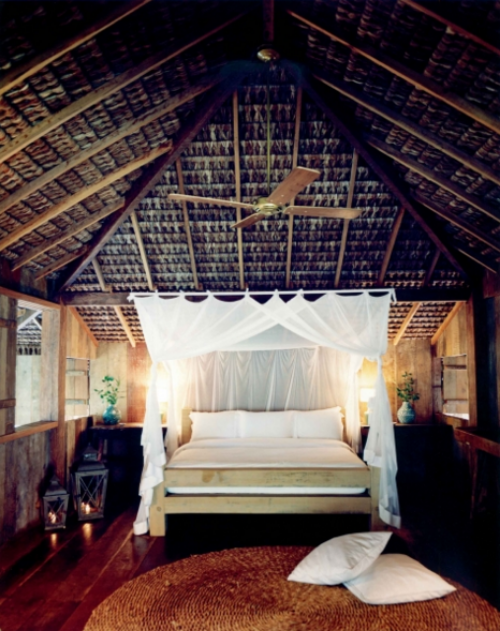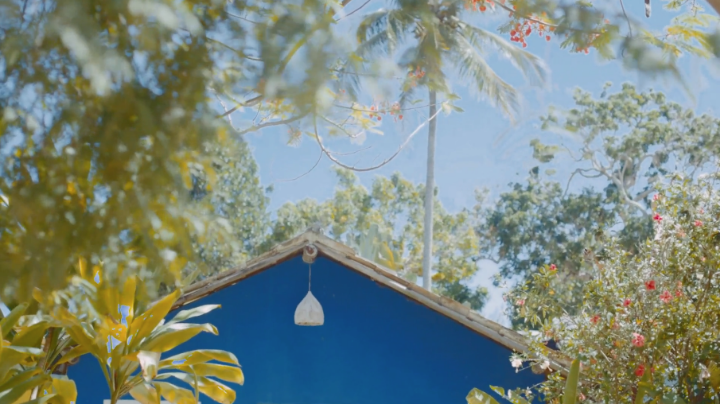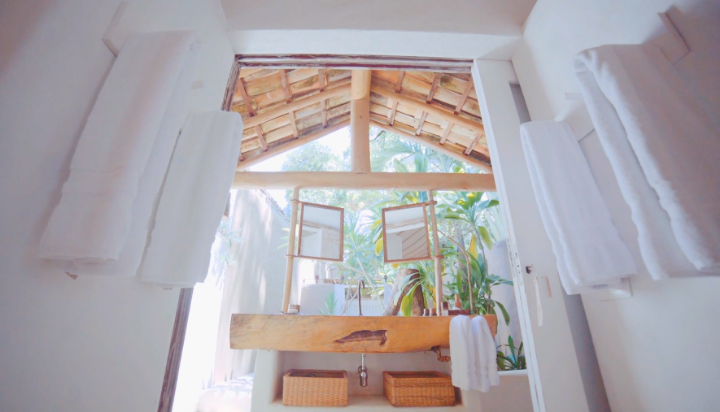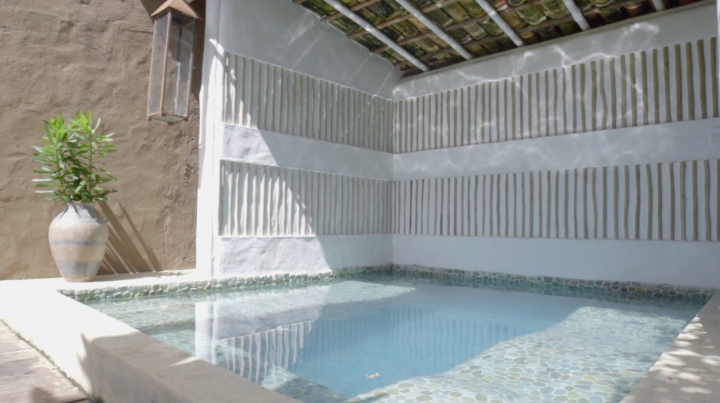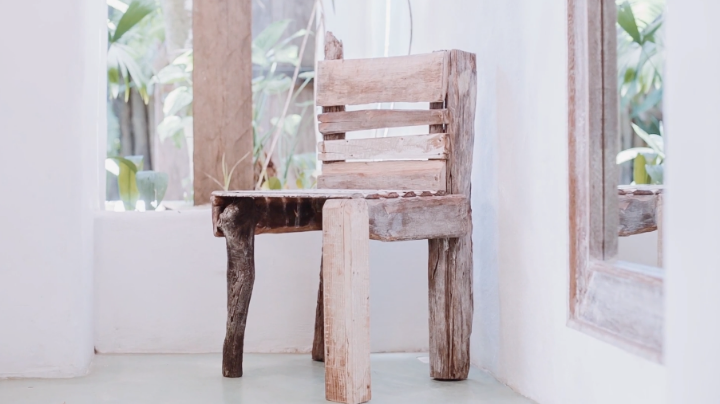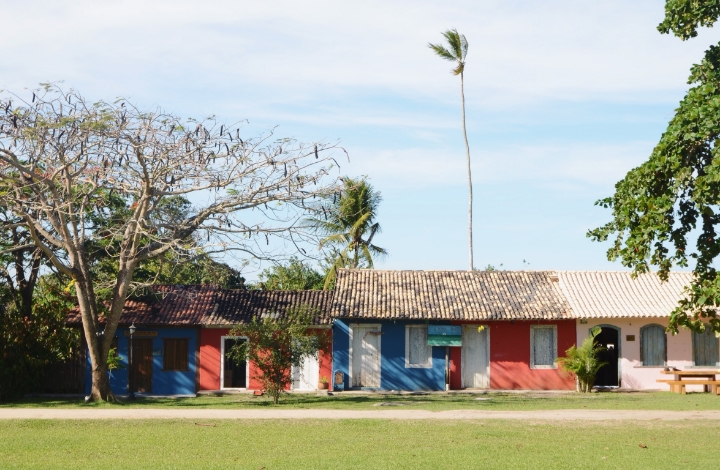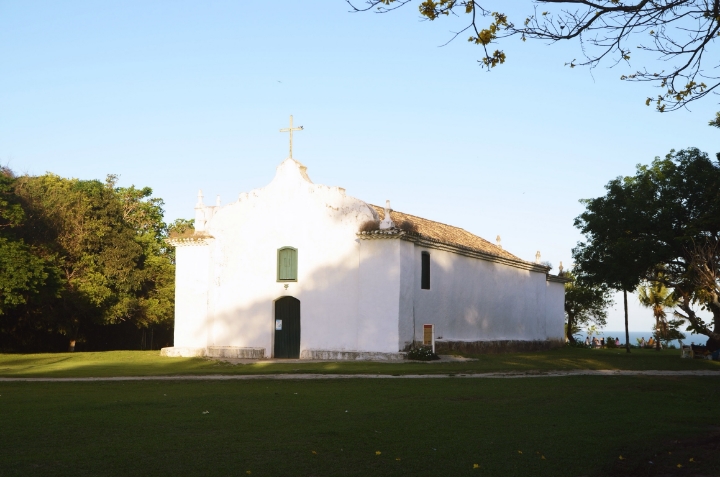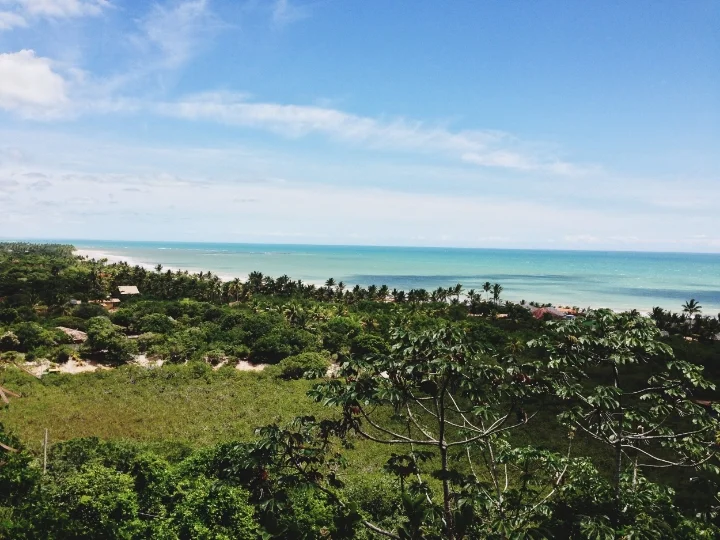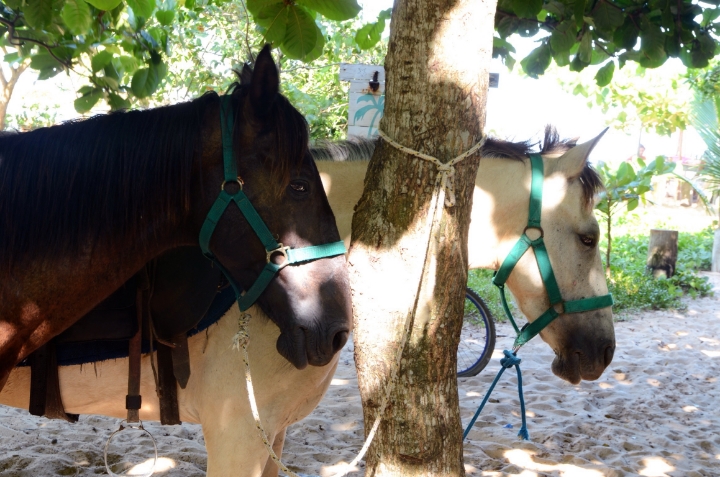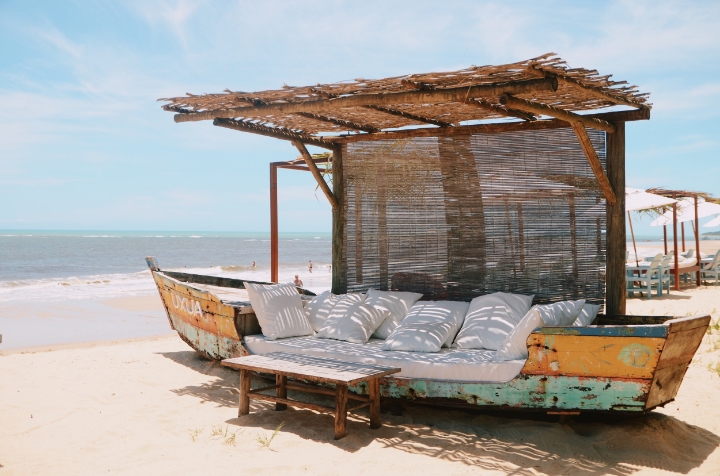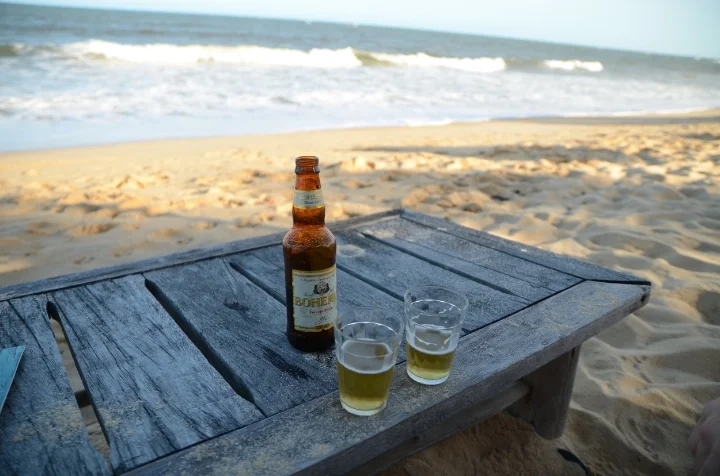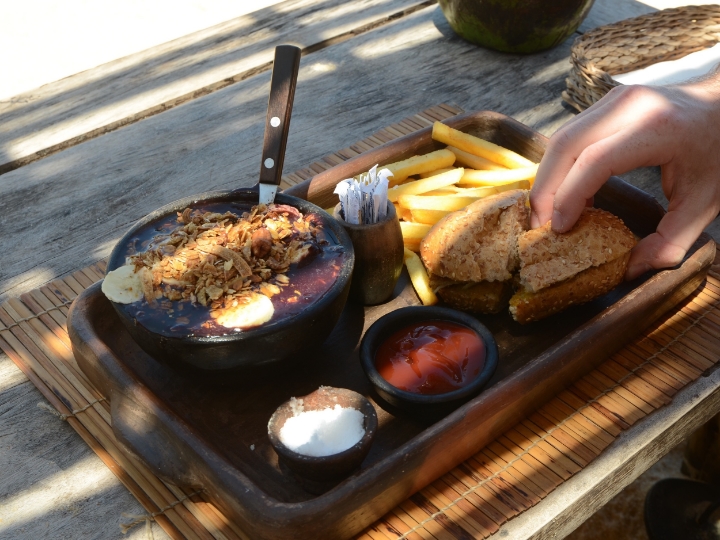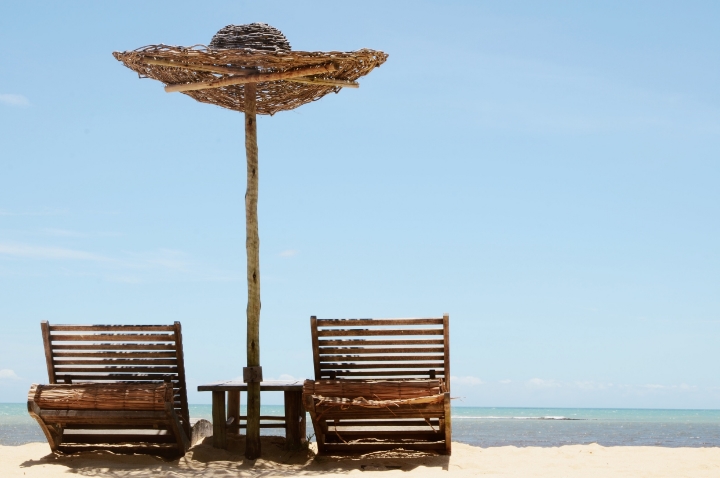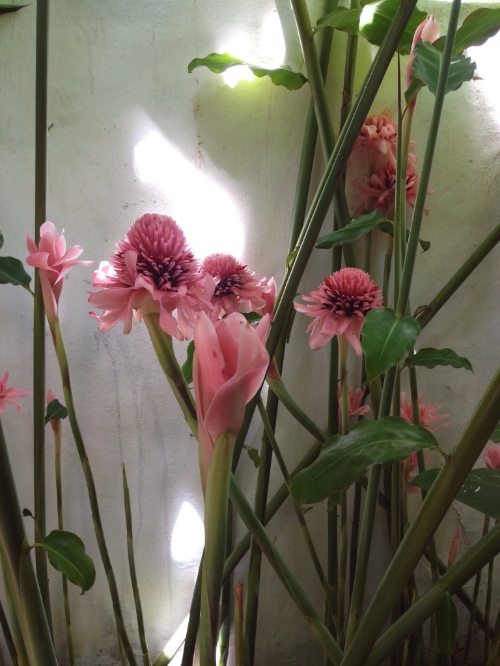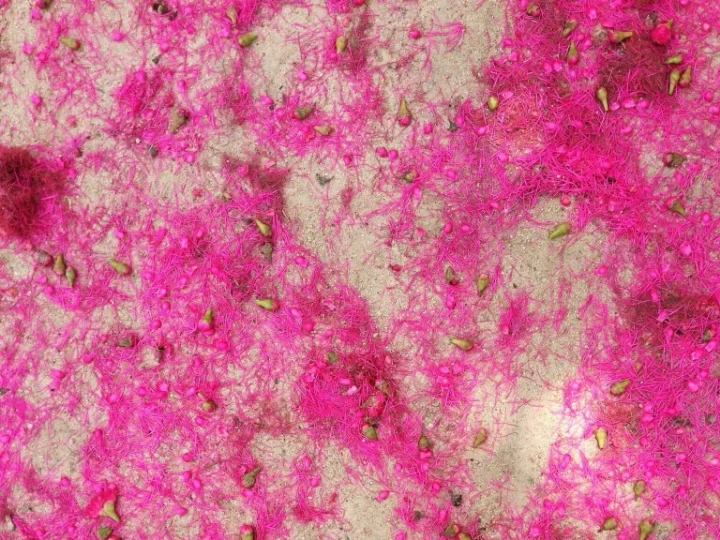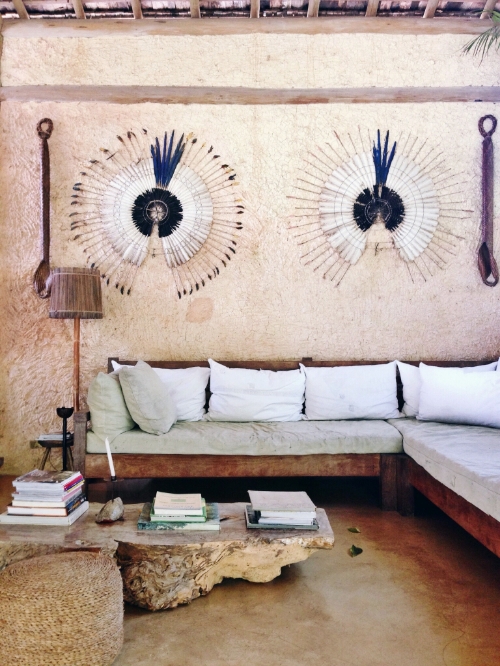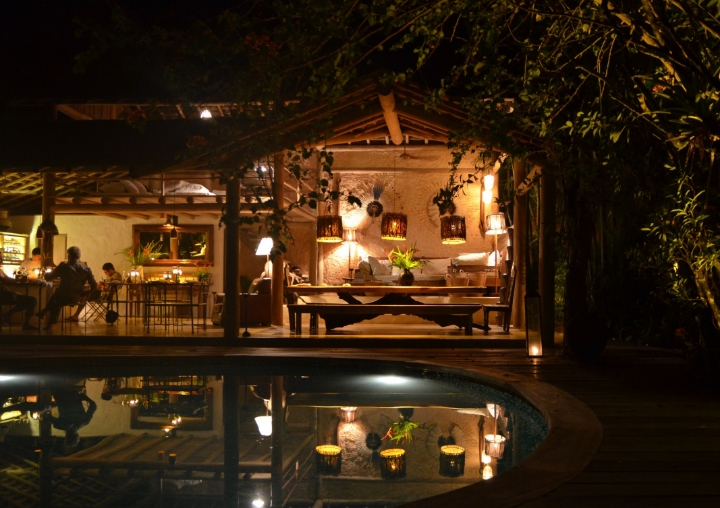by Maleeha Sambur
Trancoso, a sleepy fishing village in the coastal state of Bahia, first landed on my radar when I came across photos of Uxua Casa Hotel & Spa and fell hard for its beautifully designed spaces. I immediately wanted to redecorate my Brooklyn apartment in its likeness, and the only thing standing in my way was a lack of available outdoor shower space and a dearth of tropical vegetation suitable for a bi-level treehouse (plus zoning laws, perhaps). Though my plan was foiled, when my husband and I decided on South America for our honeymoon destination in 2013, I insisted we build a stay at Uxua into the itinerary.
Established as a mission town by Portuguese settlers in the 16th century, Trancoso remained relatively isolated from the outside world until recently, when an access road was finally connected to the highway network. In the 1970's, through word of mouth, it became a haven for hippies, and the grassroots efforts of these newcomers played a role in protecting Trancoso from development interests as resorts began cropping up in towns all along the coast, destroying once-pristine beaches and the local communities that had called the area home for centuries.
In recent years, Trancoso has earned a reputation as a playground for celebrities and wealthy Brazilians, who flock to the area during the winter holidays to mellow out -- the sleepy, laid-back town doesn't seem to care who they are. Since we were hoping for peace and quiet on our honeymoon, we decided to book our stay for the first week of December, before the fashionable crowds descended.
The Atlantic meets dense Brazilian jungle | photo by Maleeha Sambur
It took two flights from Rio (RDJ to Belo Horizante to Porto Seguro) and an incredibly bumpy 90 minute drive, much of it along dirt road, to arrive at this paradise. Emerging from the car on wobbly legs, we were ushered through an unmarked door that blended seamlessly with the colorful facades of the surrounding houses. Our bags were whisked away and the Uxua staff, clad all in white and looking like a cool breeze despite the heat, welcomed us to our suddenly fabulous new lives with knowing smiles that seemed to suggest we would soon forget everything about wherever it was we came from.
After a tour of the property, we were shown to our accommodations. Prior to arriving, I had agonized over which of the eleven rooms to book and ended up selecting the L-shaped Casa Seu João, which was built in the style of a fisherman’s bungalow. Its giant wooden doors slid open to reveal an inviting bed shrouded in a diaphanous white mosquito net, beautifully weathered furniture, a spacious bathroom featuring a sink and countertop carved out of a tree trunk, and adjacent kitchen, dining, and living areas. A private pool lay at the center of the patio, which also boasted an outdoor shower as well as a daybed nestled under a canopy of branches. Tall, leafy palms shielded our little hideaway from view.
Eager to take advantage of the abundant sunshine, we headed out onto the Quadrado, a rectangular patch of lawn ringed by a row of brightly painted houses. At one end, overlooking the Atlantic, sat a simple sunbleached church, strikingly beautiful against a backdrop of blue sky. Late in the day, children played soccer on the lawn and neighbors emerged from their houses to unwind in lawn chairs, chatting under the shade of flowering trees. At night, starry skies could be glimpsed between the leaves, and somewhere in the pitch dark, horses might take their rest (I nearly walked into one, startling us both). There's an ineffable, time-warping quality about the Quadrado; many a visitor has described it as a place where time simply doesn't exist.
São João Batista church on the Quadrado | photo by Maleeha Sambur
While we would have been perfectly content to just go back and forth between dozing poolside and checking in on the Quadrado every now and then to make sure it was still there, we decided to keep exploring. The aquamarine blues of the Atlantic beckoned, and after arguing over the proper way to get down to the beach (I am so glad that, despite my vehement insistence, my husband refused to let me crawl through a small opening in a bush, which, as it turned out, would have sent me tumbling down a precipitous cliff), we finally found a palm-lined path that led us to a bridge cutting through a beautiful mangrove forest, which eventually opened out onto the sandy shore. We staggered towards the gently lapping waves like shipwrecked sailors in reverse, and for a couple of blissful hours, we waded and wandered along sandbars before settling onto a day bed at the Uxua beach bar, where I enjoyed the best açaí bowl of my life.
Over the next few days, we didn't do much but laze about (save for one scenic bike ride). During our stay, we explored several of the town's restaurants, all of which were delicious, but the best meals we had were actually at Uxua: Bahian breakfasts with plenty of fresh fruit, juices, and decadent pastries, healthy yet flavor-packed lunches, and incredible seafood dinners in an open dining room overlooking a shimmering quartz-lined pool.
The grounds and spaces at Uxua were even more beautiful in person, and everywhere I looked, I found thoughtfully considered design details (no joke - even the toilet paper holders looked like they were carved by hand). Concrete walls and modernist furniture by Brazilian designers mingled with thatched roofs, rustic reclaimed wood pieces by local craftspeople and vintage treasures, including some gorgeous Amazonian headdresses used as wall decoration. I had assumed that the tastefully curated decor must have required a massive effort involving major design firms, but learned it was actually a collaboration between designer/owner Wilbert Das and local artistans.
Handcrafted furniture and decorative touches adorn one of Uxua's dining spaces | photo by Maleeha Sambur
According to co-owner Bob Shevlin, who we met during our stay, Trancoso's remote location meant that its residents learned to be incredibly self-reliant, resourceful, and creative, building everything they needed from scratch out of the materials found in their natural environment. He joked that they could probably make us a bicycle out of wood in an hour. His insights provided a possible explanation for an interesting quality about Trancoso that struck me over and over again: the whole town seemed infused with a highly refined aesthetic sensibility. I noticed certain design elements repeated throughout, admiring hand hewn objects that were functional but also remarkable for their sensitivity to form, color, weight, and texture. My eyes wanted to linger over everything and remember it exactly as it was.
Though it was hard to leave our paradisiac environs, more adventures awaited us in Chile, and we promised ourselves we'd make it back for our five-year anniversary. We're about halfway there, and my interest hasn't waned in the slightest. Obrigado and até breve, Uxua!
Photos are my own except 8-14; Note: some of these photos originally appeared in a post I wrote for the Steven Alan Journal in December, 2013

